AICP Certified Planner Exam Study Guide
Notes from Pennsylvania Planning Comprehensive Planning Examination Study Notes 2007
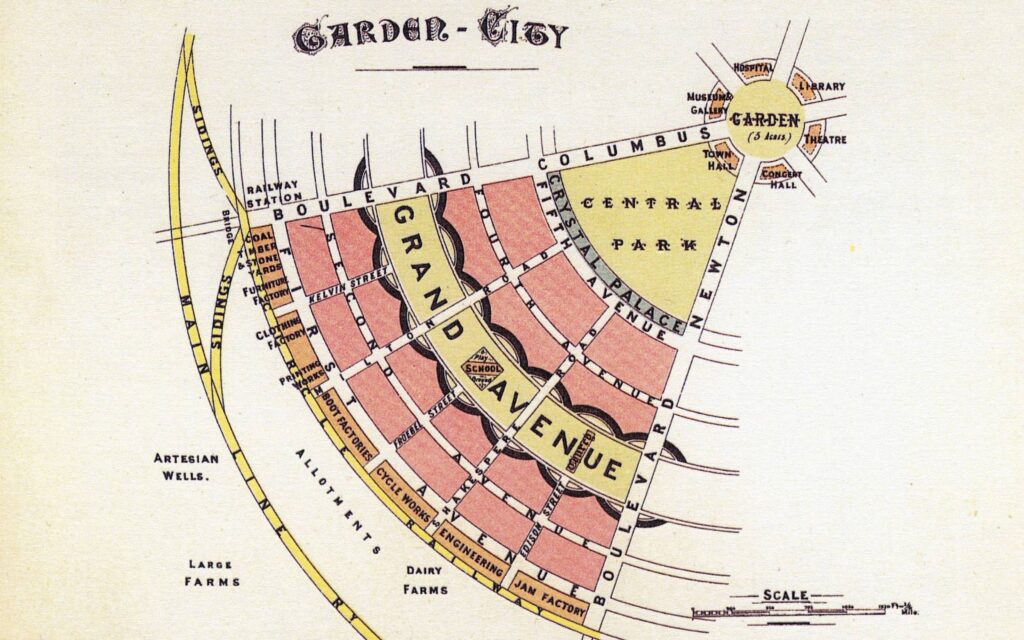
A) U.S. Planning History
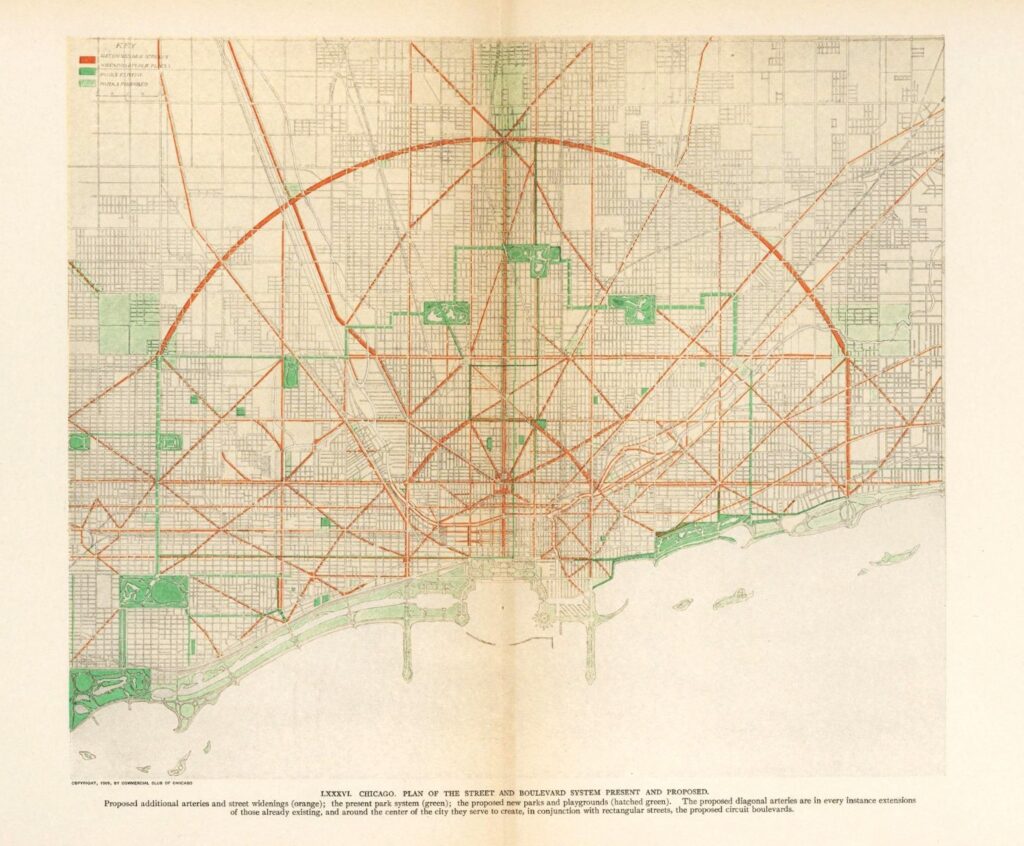
B) Planning Theory
1. Synoptic Rationalism: In philosophy in general, rationalism is the foundation and embodiment of the scientific method. It serves the same role in planning theory. The rationalist model of the planning process generally contains the following steps:
-
-
- Definition of the problems and/or goals
- Identification of alternative plans/policies
- Evaluation of alternative plans/policies
- Implementation of plans/policies
- Monitoring of effects of plans/policies
-
2. Incrementalism: This theory – which was espoused by Charles Lindbloom in The Science of Muddling Through – is a practical response to rationalism. Planning is seen as less of a scientific technique and more of a mixture of intuition and experience. Major policy changes are best made in little increments over long periods of time. Incrementalism very accurately describes what actually occurs in most planning offices on a daily basis.
3. Transactive Planning: Like incrementalism, transactivism does not view planning purely as a scientific technique. Transactivism espouses planning as a decentralized function based on face-to-face contacts, interpersonal dialogues, and mutual learning. Transactivism is roughly behavioralist-style planning.
4. Advocacy Planning: Advocacism abandons the objective, non-political view of planning contained in rationalism. Planners become like lawyers: they advocate and defend the interests of a particular client or group (which is preferably economically disadvantaged and/or politically unorganized or underrepresented).
-
-
- Paul Davidoff was an early champion of advocacy planning. He argued that there is no one public interest for planners to serve, and thus, that planners have no choice but to become non-objective advocates for specific interests and groups.
- Saul Alinsky developed an advocacist vision of planning that is centered around so-called “organizations.” Alinsky’s organizations develop where people feel powerless. These organizations then hire planners (which Alinsky largely sees as political organizers) to identify problems, develop an awareness of these problems, and generate action.
- Alan Altshuler also argued for abandoning the objective, non-political view of planning. He felt that to be effective, planners must become actively involved in the political process.
-
5. Radical Planning: In a sense, radicalism takes transactivism to its logical extreme. Radicalism hates hierarchical bureaucracies, centralized planning, and domineering professional planners. It argues that planning is most effective when it is performed by nonprofessional neighborhood planning committees that empower common citizens to experiment with solving their own problems. The ideal outcomes of this process are collective actions that promote self-reliance. Much of the radical planning literature that I
have personally read is based on Marxist interpretations and theories.
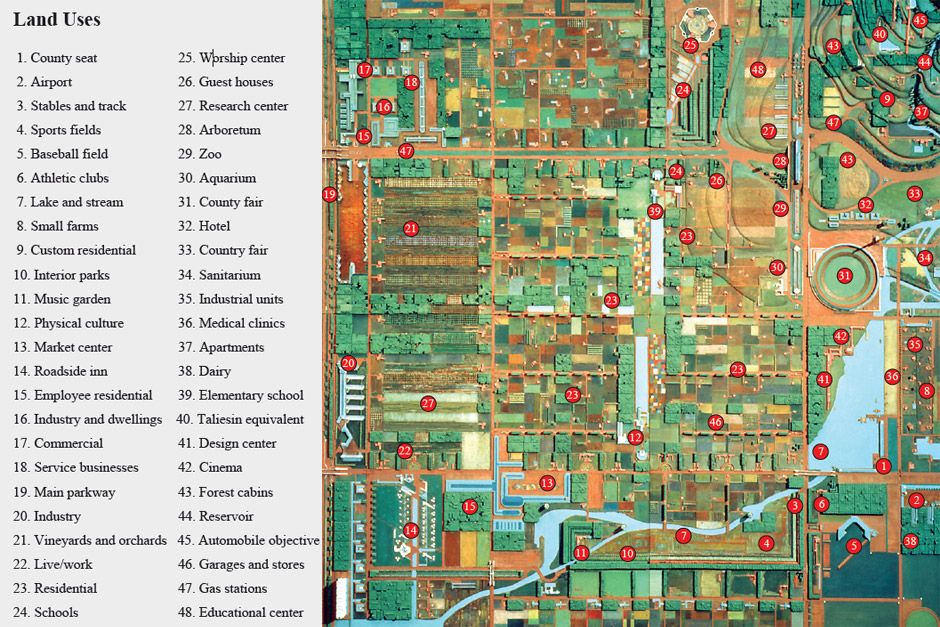

6. Utopianism: Utopianism believes that planning is most effective when it proposes sweeping changes that capture the public imagination.
-
-
- Daniel Burnham’s Plan of Chicago
- Frank Lloyd Wright’s Broadacre City
- Le Corbusier’s La Ville Contemporaine
-
7. Methodism: Methodism addresses situations in which the planning techniques that should be used are known, but the ends that should be achieved by these techniques are not. Such a situation would be making a population projection just to have it handy when it is needed. Methodism views planning techniques as ends into themselves.
DISSECTING TECHNIQUES: Dissecting techniques are used to produce theories about planning’s function in society. These techniques are based on describing what planners actually do, and not on idealized visions of what planners should be doing. Incrementalism and methodism are partially products of dissecting techniques.
ARNSTEIN’S “LADDER OF PARTICIPATION”: Arnstein’s theory divides public participation in policymaking and planning into three major levels – based on the power that the general public actually has.
-
-
- Non-participation (the general public is manipulated)
- Tokenism (the general public is informed, consulted, and placated)
- Citizen power (the general public becomes a partner with actual control over policy)
-
C) Patterns of Human Settlement
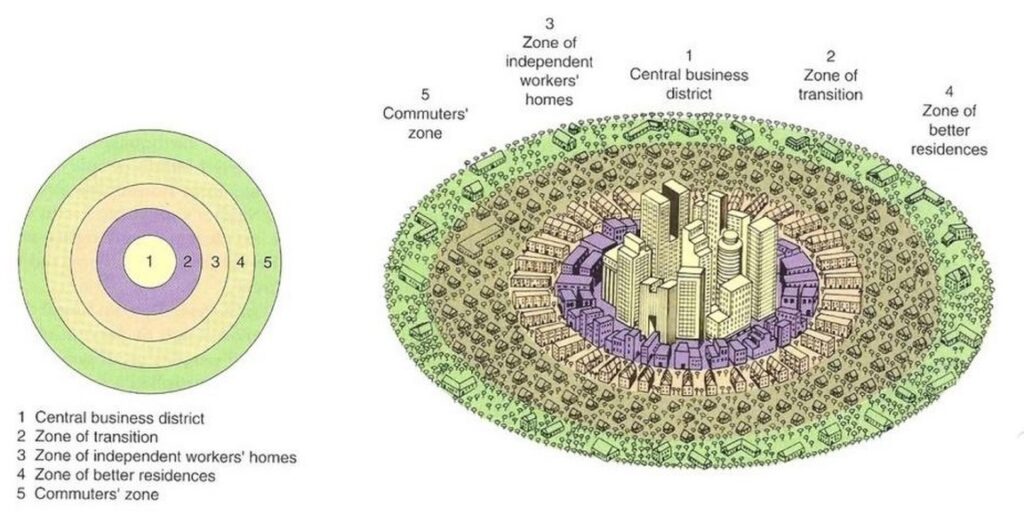
1. Concentric Theory (Burgess, 1925): A city is seen as a set of concentric rings (these rings are roughly listed, in order, below). As the city grows, each ring invades and overtakes the next ring out – a process called Invasion/Succession (thus, Concentric Theory is sometimes referred to as “Invasion/Succession Theory”).
-
-
- The central business district (CBD)
- Independent worker housing
- Better housing
- Commuter/suburban housing
-

2. Sector Theory (Hoyt, 1939): High-density residential, commercial, and industrial uses radiate out from the central business district (CBD) in “sectors” that follow major transportation routes. More expensive housing also radiates out from the CBD – towards large open spaces and higher ground. Less expensive housing takes whatever land is left over.
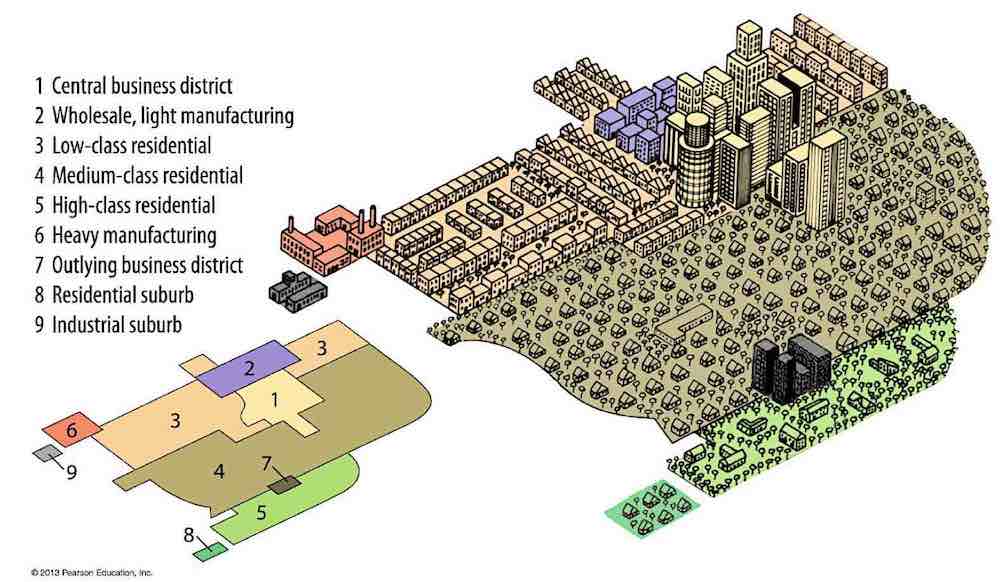
3. Multiple Nuclei Zone Theory (Harris and Ullman, 1945): Certain land uses group together to take advantage of unique facilities (e.g., universities), specializations, codependencies, or externalities. This theory is often applied to cities with more than one CBD.

D) Emerging Issues & Trends – Impacts of Change
1. Social Changes: Social change typically happens slowly over the course of years or even decades. Faster change generally is met with opposition, which can be severe. Social change can occur through empowerment at the grassroots level, social unrest, or revolution (to name a few). The integration of the telephone into everyday life is an example of typical social change. The Civil Rights Movement of the 1960s is an example of change brought about by unrest.
2. Economic Change: Economic change – we would like to think – is generally upward. With the understanding of the economic cycle, we know there are peaks and valleys, however. Like social change, economic change overall is gradual. Abrupt changes in either direction generally cause great stress and unrest. Paradoxically, affluence tends to bring a detachment from society and the environment that is generally detrimental, while being less well-of tends to keep one closer to other people and the world around.
3. Demographic Change: The average US citizen believes that demographic increases are generally good when it comes to local economy and society. However, many believe the world is already overcrowded and unable to sustain additional population. The world population is increasing at a great rate, but the population migrates from place to place, impacting localities. The natural course of localities is to wax and wane over time, with some enjoying long-term viability and success, and others fading to oblivion.
4. Technological Change: Technological changes impact many facets of our lives. After all, “sloth is the mother of invention.” The Twentieth Century by far saw the fastest advance of technology in recorded history, much of it enabled by the harnessing of electricity. The impact of household appliances, the automobile, and modern communication devices is immeasurable. It can’t help but to affect the way we see the world – and each other.
E) Current Topics
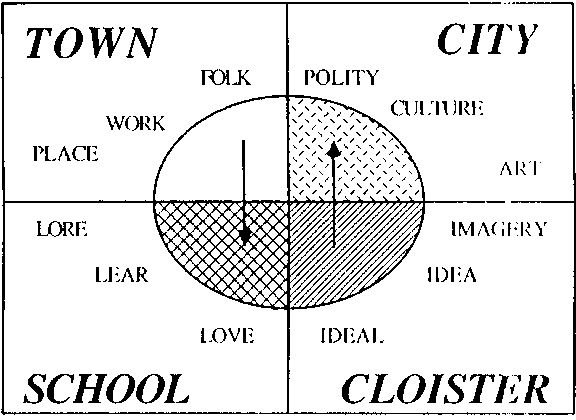
F) Plan Making
-
-
- Strategic Planning & Visioning
- Goal Setting
- Research Methods & Techniques
- Analysis of Information
- Demographics
- Information Systems
- Impact Analyses
-
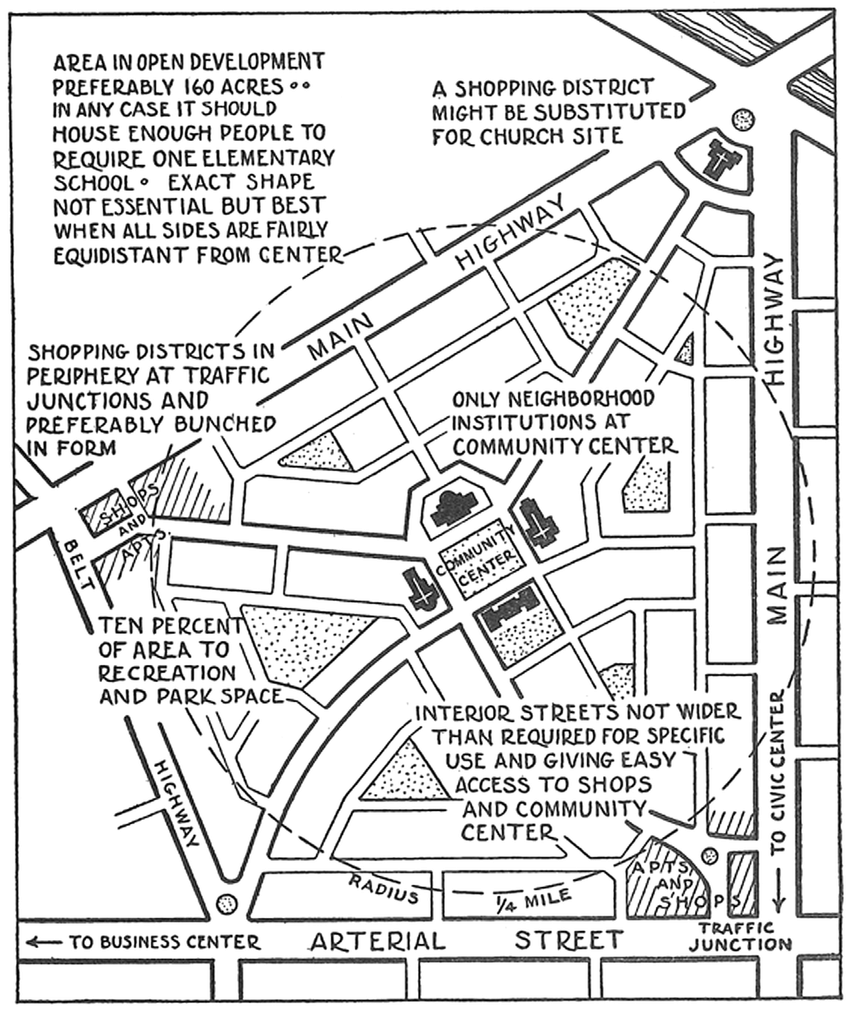
G) Functional Topics
-
-
- Natural Resources & Environmental Quality
- Land Use
- Infrastructure
- Transportation
- Recreation
- Economic Development & Revitalization
- Historic Preservation
- Housing
- Neighborhood Issues
- Rural & Small Town Planning
-

H) Plan Implementation
-
-
- Land Use Regulations
- Application of Legal Principles
- Environmental Impact Analysis
- Growth Management Techniques
- Budgets
- Development Project Review
- Program Evaluation
- Communication Skills
- Intergovernmental Relations
- Project and Program Management
-
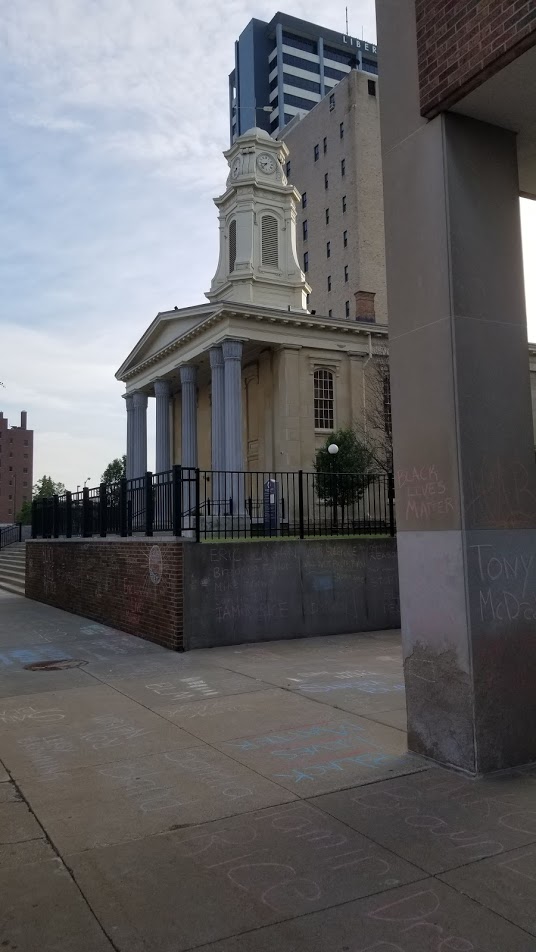
I) Public Interest
-
-
- Ethics
- Social Justice (Multi-Cultural & Gender Issues)
- Public Participation
- Negotiation & Coalition Building
-
